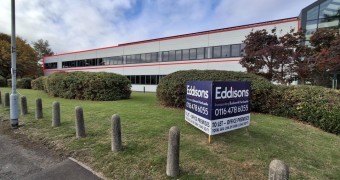Different types of industrial property in the UK
We’ve previously written about how to approach an industrial property investment and why it represents an attractive asset class. Alongside retail and office, the industrial segment continues to be a vital part of the commercial property market, yet the specialist knowledge required in the sector means it’s often overlooked.
In the UK, the fundamentals of the industrial sector remain strong. When demand for goods increases, businesses need more space to produce, store and transport goods around the country and internationally, and to do that, they need industrial property. However, unlike homogeneous asset classes like offices, shops and apartment buildings, building types within the industrial sector are extremely varied. It includes everything from small 500 sq ft units to vast, fully automated warehouses and distribution centres.
That sheer variety means searching for an industrial property investment or new premises for your business can feel overwhelming. At Eddisons, our commercial property agents can help you find the right space at a reasonable cost. But first, you need to understand the different industrial property types available.
Find Commercial Property
Regardless of your commercial property requirements, our team of experts are perfectly placed to help give you the right knowledge when you need it the most. Browse our available commercial property here. If you can’t find what you’re after or have any other queries then please contact a member of the team who will be happy to help.
Categories of industrial property
In simple terms, there are three different categories of industrial property in the UK:
- Manufacturing - where goods are produced and assembled
- Storage and distribution - for storing goods and transporting them to a variety of users
- Flex space - buildings that can serve multiple purposes, such as a warehouse that also contains office space
Within each of these three categories, there are various industrial property types.
Industrial property types - manufacturing
Heavy manufacturing buildings
These are the buildings people typically picture when thinking of industrial properties. They can be many thousands of square feet in size and contain specialised equipment and machinery for the production and assembly of a wide variety of goods. They are often highly customised, meaning they tend to be owned rather than leased, and may contain robotics and automation to reduce labour costs and increase efficiency.
Light assembly buildings
These manufacturing plants are smaller, less specialised and easier to convert to meet the building user’s needs. That’s why they’re typically leased rather than owned. They often contain storage areas and offices to provide multiple functions and the machinery and equipment tend to be smaller and more portable.
Industrial property types - storage and distribution
General warehouses
These buildings can vary hugely in size and are often customised, with cold storage or freezer space, for example, depending on the goods they contain. They usually have loading docks and concrete truck courts, and tend to be owned and managed by manufacturers and built near their production units.
Distribution warehouses
Distribution warehouses are usually located near major road networks and airports for the efficient transportation of goods to businesses and consumers. As well as location, the door-to-square footage ratio is important for the easy movement of goods. The size of distribution warehouses depends on whether they are national/regional hubs or smaller ‘last-mile’ facilities that are within easy reach of end-users.
Cross-docking facilities
Cross-docking facilities enable companies to distribute goods efficiently without storing them for long periods. As such, storage space is of a minimum. Instead, they are focused on transportation and the ease of movement of goods and vehicles, with products being unloaded, sorted and immediately reloaded for delivery.
Industrial property types - flex space
Research and development hubs
Any industrial building that serves multiple purposes is considered a flex space. A common example is R&D facilities, which typically include a variety of specialised spaces that allow businesses to perform different tasks under one roof. R&D hubs are often leased by hi-tech and electronics firms.
Out-of-town showrooms
Large out-of-town car dealerships and furniture retailers typically have showrooms where they display their products, office space and loading docks so they can move goods in and out. This type of building usually has lower ceiling heights than a general warehouse but more office space.
Industrial property type - datacenters
One type of industrial property we’ve not discussed so far is data centres. Warehouses can be a good fit for data centre retrofits as they usually have the ceiling heights required for cooling. However, they must be close to high-volume energy, water and communications infrastructure, with locations in and around large urban areas usually preferred. Data centres also need security to prevent unauthorised entry.
Find the right fit
Whatever help you need with industrial property, whether you’re seeking an investment, want to find the right premises for your business or need help managing an industrial property, our team can help. Find out more about our industrial property services and get in touch to discuss your requirements with our team.
Experts in commercial property
Contact our team of leading auctioneers, property agents, and RICS-qualified surveyors today.
Land sales and acquisitions
We help clients buy and sell land for commercial development. Our commercial property team are here to help you realise the best possible return. From our network of offices across the UK we have the local knowledge and national capability to obtain effective outcomes.









